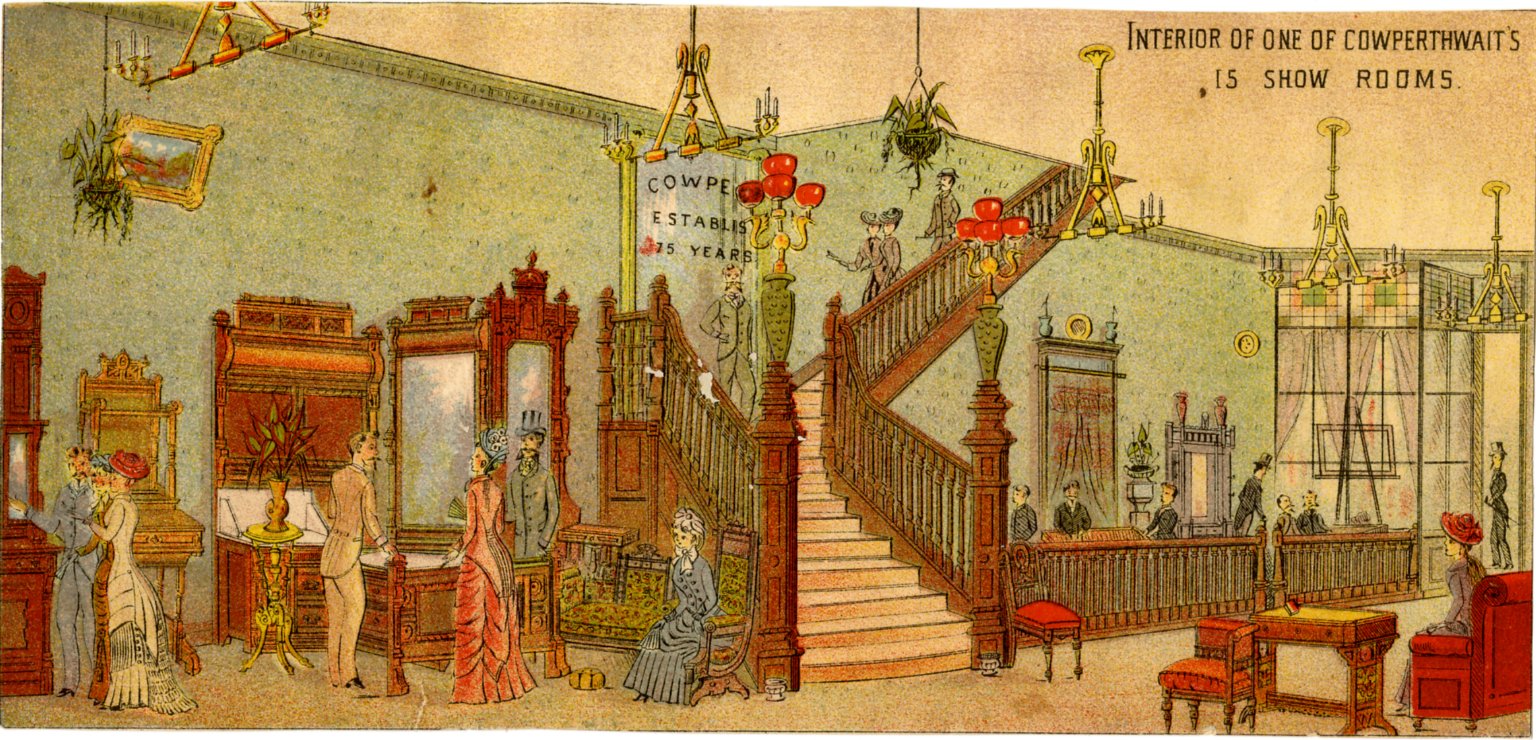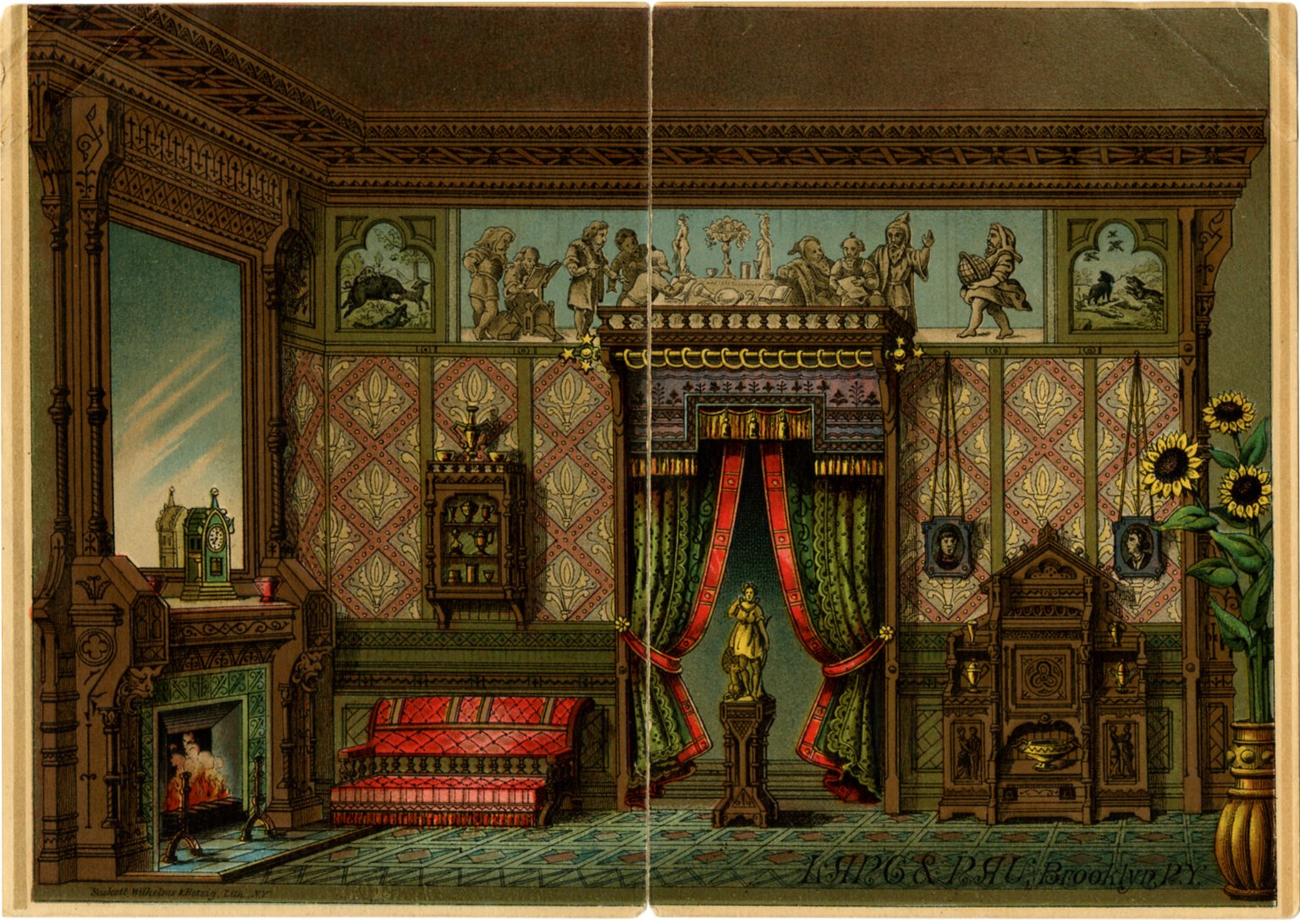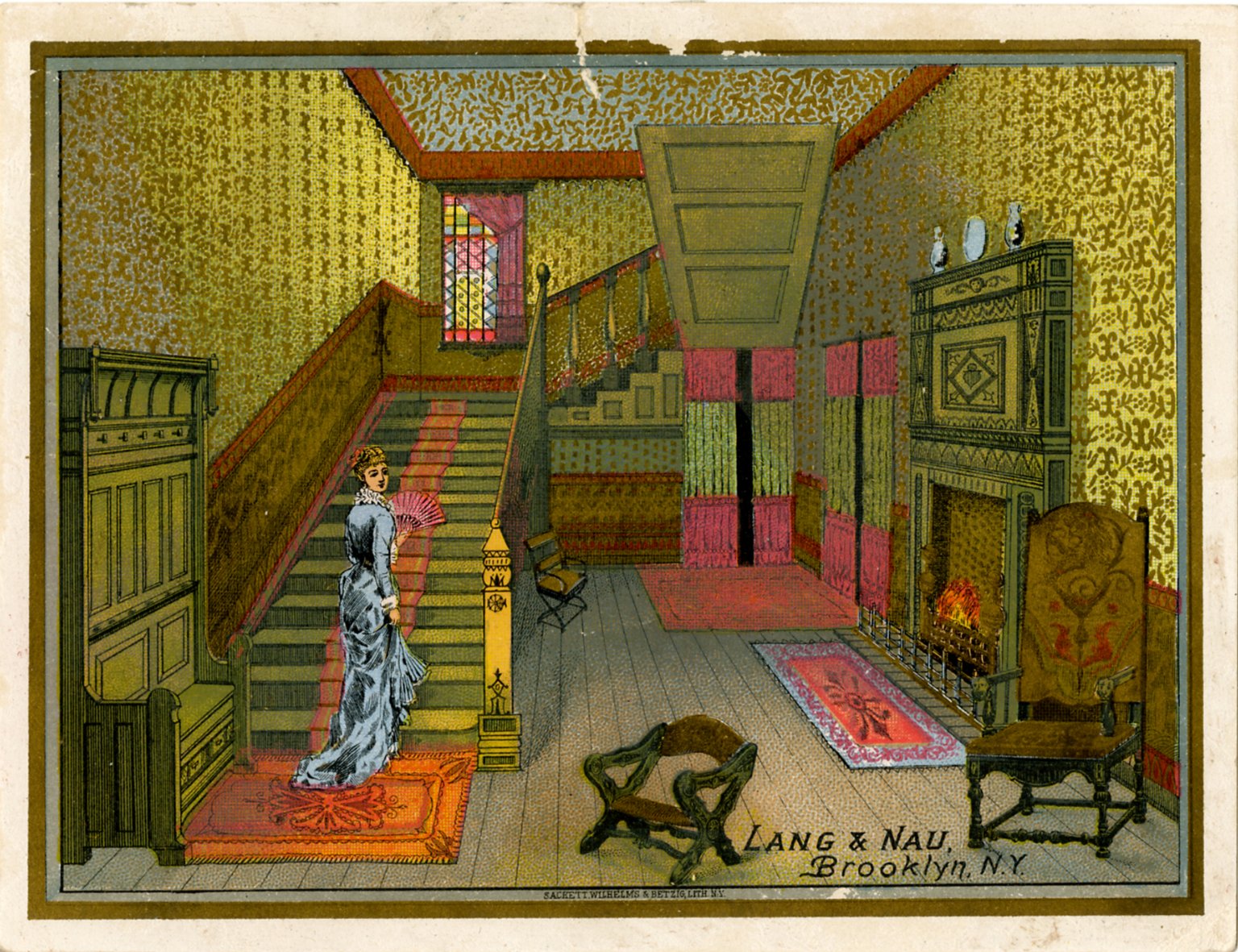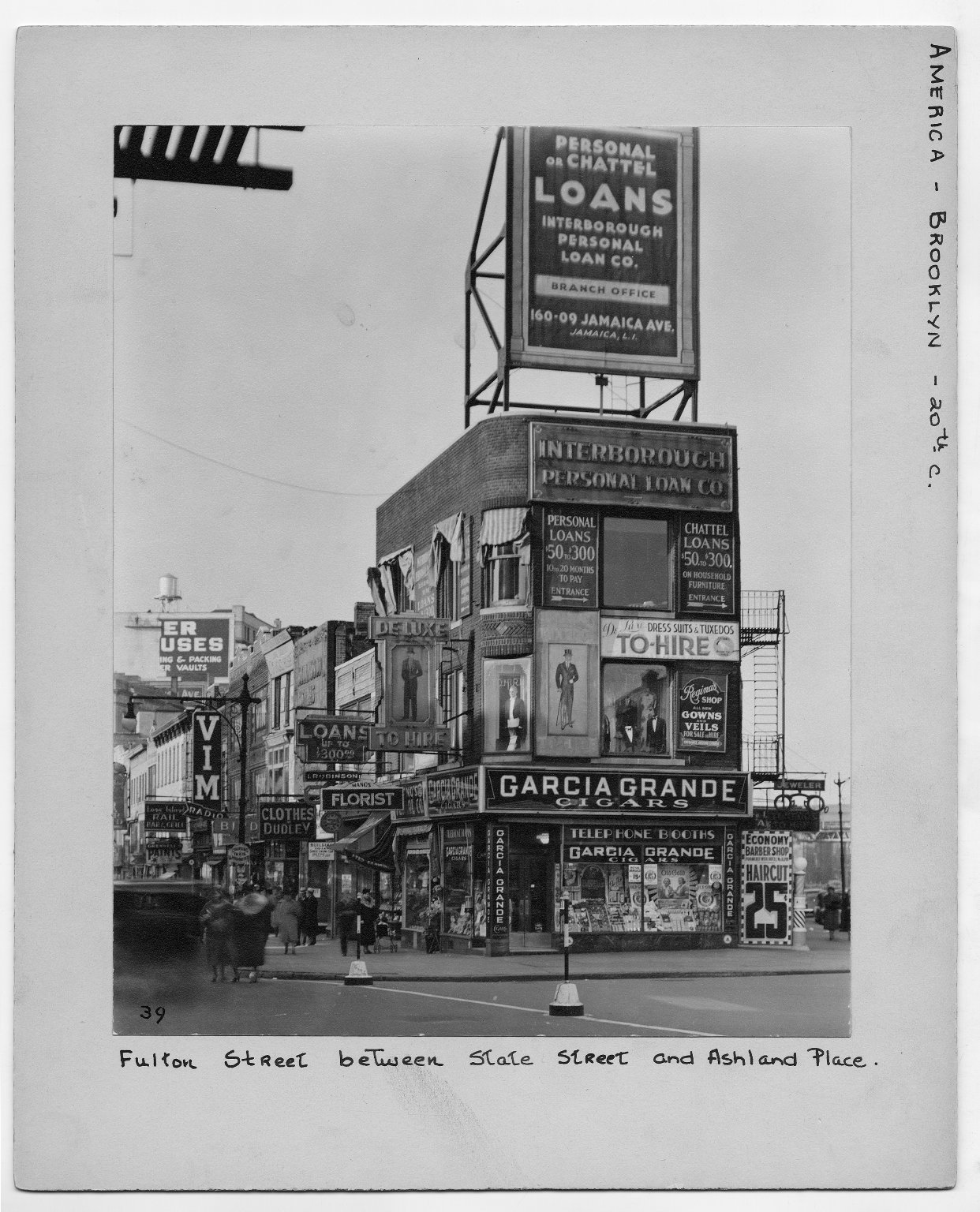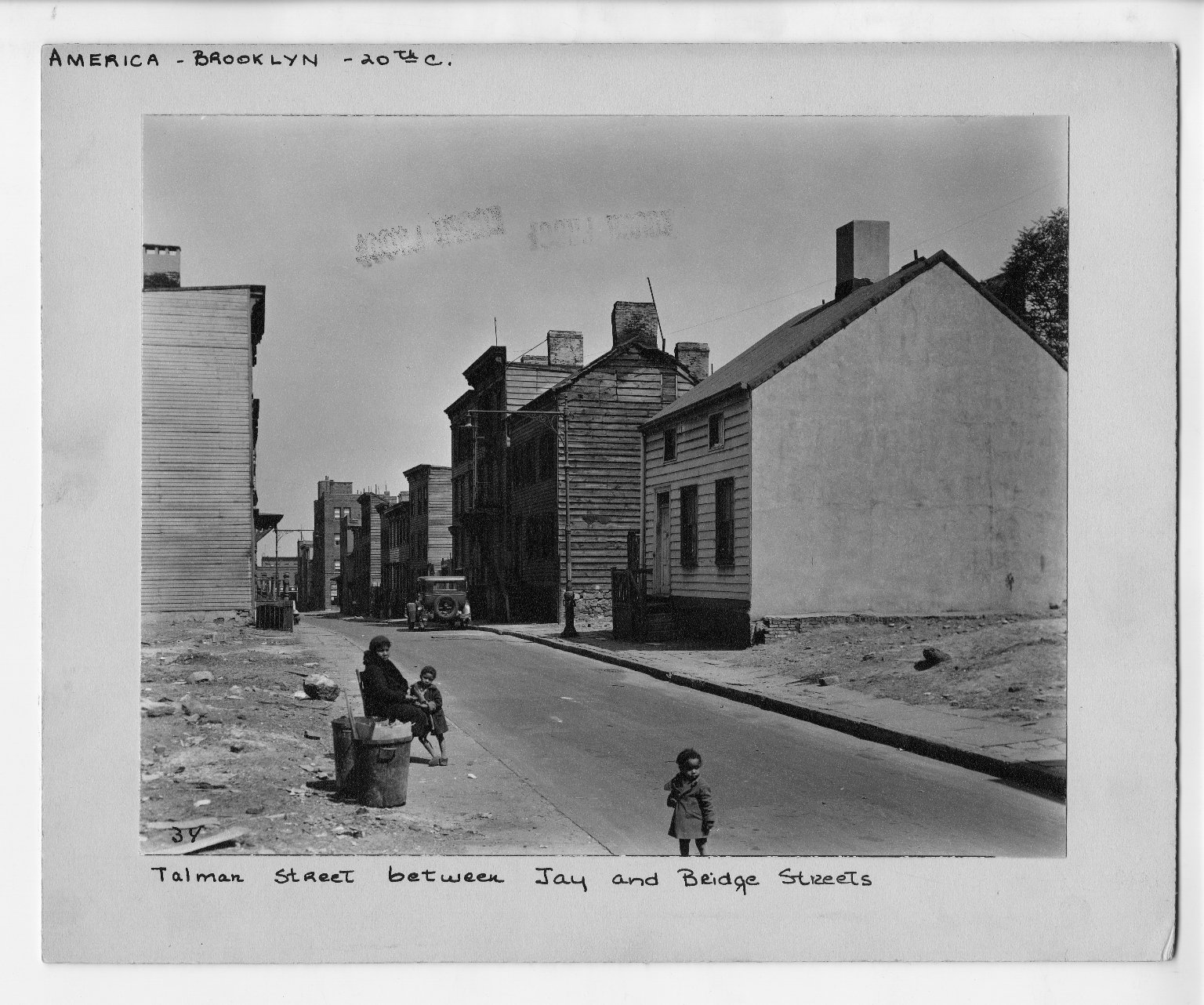Creating Visual Memories
Sometimes when you first see an image it resonates without clear reason. The items I have selected have remained in my visual memory throughout my time working for the Brooklyn Museum and Project CHART. They each share a common thread in which point of view is vital to reading the images.
Perhaps they have stayed in the back of my mind because they also embody certain nuances that enhance the space captured. The trade cards displayed here lavishly depict Victorian era furnishings and represent a wonderful example of the textual opulence and craftsmanship indicative of this time period. However, there is an added psychological component in which the viewer crosses the line as an interloper of sorts, eavesdropping on bygone days.
Trade Card. B.M. Cowperthwait and Company. 408, 410 and 412 Fulton Street. Brooklyn. Recto.
Trade Card, 1882. Lang and Nau. 292 and 294 Fulton Street. Brooklyn. Recto.
Trade Card. Lang and Nau. 292 and 294 Fulton Street. Brooklyn. Recto.
As I have been working on this project, the sense of history found within the Libraries and Archives has been an impactful experience. I think the two photographs by Berenice Abbott speak to this as they represent Brooklyn’s vitality during the Great Depression. The image of billboards and signs on Fulton Street seem to scream out to the viewer eliciting intimidation as well as a desire to walk those streets and be a part of humanities strides in technological development. I may be going out on a limb, but I feel the photo of the child standing on Talman Street represents a certain bravery coupled with a hope for this development and likewise bears witness to its advent.
Fulton Street between State Street and Ashland Place.
Talman Street between Jay and Bridge Streets.
When viewing all of these images together, I am aware of a clear social dichotomy that surfaces almost immediately. This division of class is an inescapable observation, the representations in the trade cards and photographs that I speak of seem to tell a whole story rather than a chosen history. While working on Project CHART, I came to appreciate the range of materials in the Museum's Libraries and Archives collection. The archival appraisal process has gone through much change and debate as what we collect becomes nearly the finite example of our culture for future generations. Many institutions have struggled to fill gaps in their holdings to address underrepresentation. However, the Libraries and Archives historically seems to have had a big picture point of view and today continues to collect and document, especially Brooklyn, in a holistic manner.
By: Veronica Garcia Rodriguez - Brooklyn Museum intern

![[Street in Brooklyn Heights with derrick and construction shed]](../sites/default/files/imagecache/70x60/externals/4e2e634e8f9652fb5aeac3442b7d1873.jpg)
![[Man fishing by pool in woods]](../sites/default/files/imagecache/70x60/externals/bfa2dc355b2e8a3a31bfd65426cddba6.jpg)


![[Pearl Street south of Nassau Street]](../sites/default/files/imagecache/70x60/externals/930a2ec707fa2bd00362c9cb2c9112fb.jpg)
![[View of Pier 2 from Promenade.]](../sites/default/files/imagecache/70x60/externals/57e97d8633701373ad346d0739d61dea.jpg)

![[View looking across from Seatrain to Coastal]](../sites/default/files/imagecache/70x60/externals/99af1be4e07faf12307178cca194ed70.jpg)
![[Brighton line - Kings Highway BMT station.]](../sites/default/files/imagecache/70x60/externals/714bb9745e80c136bb69836d2a77eab9.jpg)
